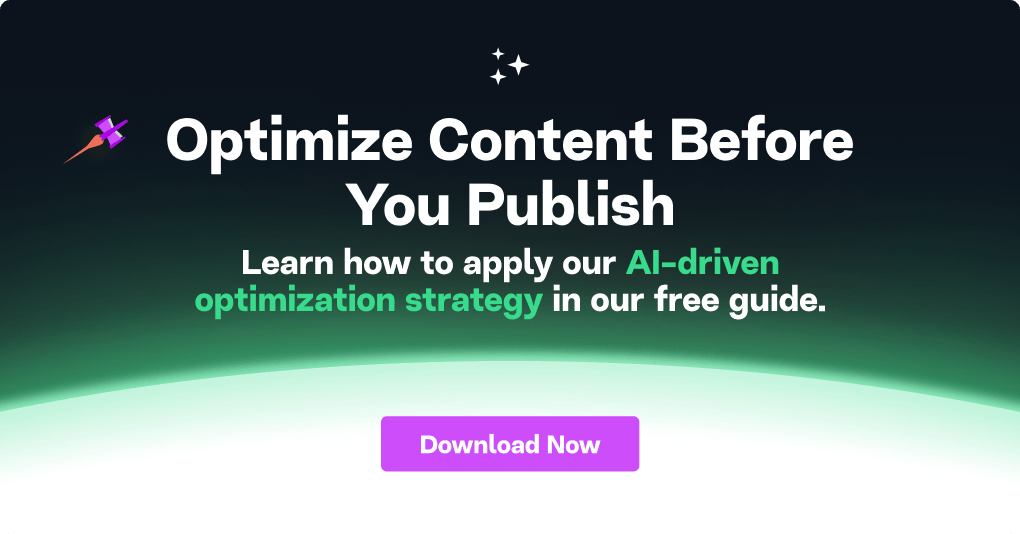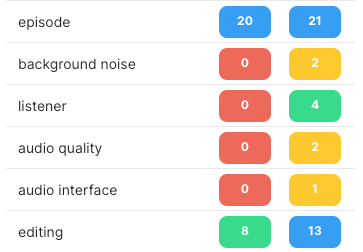Content Optimization: Should I Update an Existing Page, Create New Content or Both?
Getting a page to rank for hundreds of different terms is wonderful news. But then comes the problem. How can you possibly optimize one page for all that variety?
In this post, we work through a three-step content optimization process to help determine whether to update an existing page, create new content, or both. Often, one page isn’t enough and we’ll show you how to determine whether that’s the case or not.
Here’s the process we’re going to follow:
1. Decide whether the topic has enough value to warrant the effort.
2. Determine how closely the topic is related to the main subject of the article.
3. Determine how much content is required.

Let’s look at the steps in a little more detail.
Decide Whether the Topic Has Enough Value
Value metrics are typically either traffic or dollar based, such as monthly search volume, Potential Traffic, Potential Traffic Gain, and Potential Traffic($). Personally, I prefer using Unrealized Value as one of my decision-making metrics. Whatever you choose, make sure to apply the criteria consistently when working through a list of topics.
Determine How Closely the Topic Is Related to the Main Subject of the Article
Optimization is about making something better, not turning it into something else. The closer the relationship between topics, the easier it is to incorporate into the current page. The opposite also applies, in which case creating a new piece of content is the best choice.
When a page ranks for many topics, those that rank poorly are often adjacent to the main subject of the content or there’s an intent mismatch.
Determine How Much Content Is Required
A major flaw of stand-alone optimization software is that it lacks context. All it can do is offer suggestions on how to optimize one piece of content, even if that’s not enough – and most often it isn’t.
Using Personalized Difficulty and Competitive Advantage is an ideal way to determine how much content is required.
The best way to look at Personalized Difficulty is in terms of the ranges or bands.
- Below 20 — optimize the existing page (assuming the topic matches what the page is about). Otherwise create a new page.
- 20 to 35 — optimize the page as above and create/optimize a page or two of supporting content.
- 35 to 50 — optimize the page as above and build out/optimize your existing cluster.
- 50 plus — most likely you don’t have a cluster so you’ll need to build out this foundation.
Those ranges offer a reasonable expectation of what’s required to achieve success.
Two Examples of Using The Process
Let’s use this article in Content Marketing Institute, How to Make a Weekly Podcast: A Step-by-Step Guide by Robert Rose, as an example. We’ll run through a couple of topics, “how to produce a podcast” and “how much can you make from a podcast” to see how the process works.

This page ranks at position 18 for “how to produce a podcast,” which at first glance, appears to be the focus topic (what the article is about). I’m also assuming that while explaining podcast production, the article includes time values, thus answering the question “how long does it take to create a podcast,” for which it ranks in first place. Lets confirm the article is about podcast production by reading it and using Optimize to verify its Content Score vs the Target Content Score.
We’ll also want to check the SERP to ensure our page serves the appropriate intent.

Sure enough, the article aligns well with the topic “how to produce a podcast.” Although it has a Content Score of 24 vs. a Target Content Score of 48, it appears that Robert covers many of the important topics using different terminology.
For example, although Robert offers advice about improving audio quality, he doesn’t use that term. Also, he uses the term “extraneous noise” while the common term is “background noise”.

In this case, some light editing will probably suffice to hit the target content score and aligningHowever, there’s something else we need to consider.
With a Personalized Difficulty of 30, we’re right on the edge of the band. So we’ll probably need to create a content cluster and update any semantically related pages. The requirement of a content cluster is no surprise given that there are entire sites devoted to creating podcasts.

I may be inclined to update this page first and see how it responds, with the understanding that additional work (a content cluster) may be required. But that point is probably moot. As we work our way through other topics this page ranks for, we’ll have the opportunity to create additional pages, as in the next example.
Our second example from this page is the topic “how much can you make from a podcast” ranking in Google at number 77. The low rank is understandable given that this article is about podcast production and not monetization.
We can also confirm that by running the page/topic combination through Optimize. Doing this reveals that the Content Score is 11 vs. a Target Content Score of 33.

Topics related to “how much can you make from a podcast” are very different from “how to produce a podcast.” Yes, you can create a relationship between podcast production and monetization – more income means more production resources.
But optimizing for that subject risks changing the nature of our article which, as pointed out previously, is something we want to avoid.
So, we’ll need to create a new page on “how much can you make from a podcast”, if we don’t already have one. And we want to link that new page to the one we’re examining here. With a Personalized Difficulty of 37 and a Topic Authority of 20, there’s no doubt we’ll need a content cluster. Creating that will help boost our original page as well.

Takeaway
The goal of optimization is to improve coverage of those topics closely related to the article’s subject. Don’t make the mistake of trying to optimize every topic for which a page ranks. For closely related topics, sometimes a mention is all that’s needed. Other times a paragraph or section will be more editorially appropriate. Topics adjacent to the subject of a page usually don’t rank so well and will require pages of their own. Just remember to link both together forming a content cluster.
What you should do now
When you’re ready… here are 3 ways we can help you publish better content, faster:
- Book time with MarketMuse Schedule a live demo with one of our strategists to see how MarketMuse can help your team reach their content goals.
- If you’d like to learn how to create better content faster, visit our blog. It’s full of resources to help scale content.
- If you know another marketer who’d enjoy reading this page, share it with them via email, LinkedIn, Twitter, or Facebook.
Stephen leads the content strategy blog for MarketMuse, an AI-powered Content Intelligence and Strategy Platform. You can connect with him on social or his personal blog.